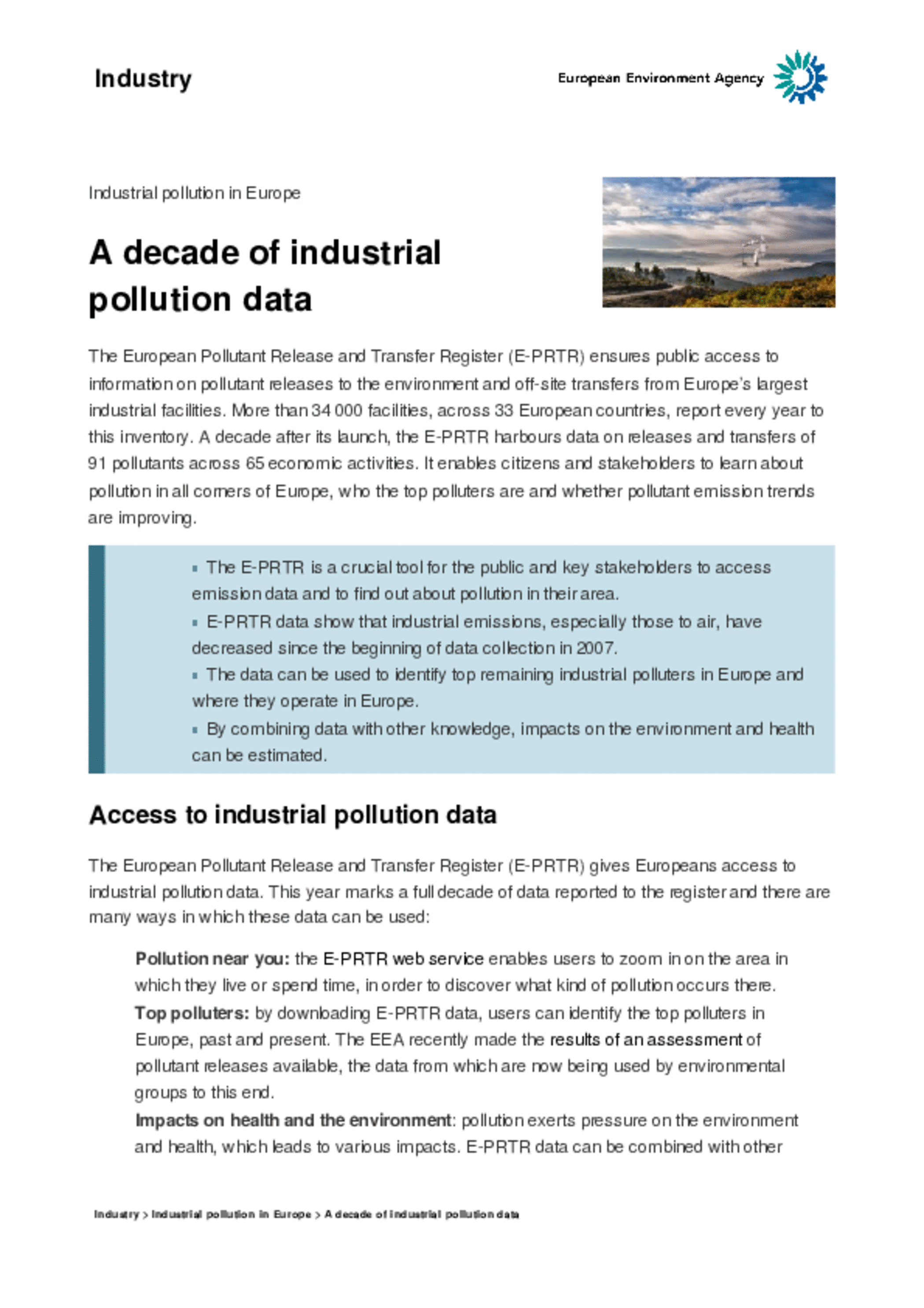All official European Union website addresses are in the europa.eu domain.
See all EU institutions and bodiesBriefing 4/2019
The European Pollutant Release and Transfer Register (E-PRTR) ensures public access to information on pollutant releases to the environment and off-site transfers from Europe’s largest industrial facilities. More than 34 000 facilities, across 33 European countries, report every year to this inventory. A decade after its launch, the E-PRTR harbours data on releases and transfers of 91 pollutants across 65 economic activities. It enables citizens and stakeholders to learn about pollution in all corners of Europe, who the top polluters are and whether pollutant emission trends are improving.
ISBN: 978-92-9480-084-8

